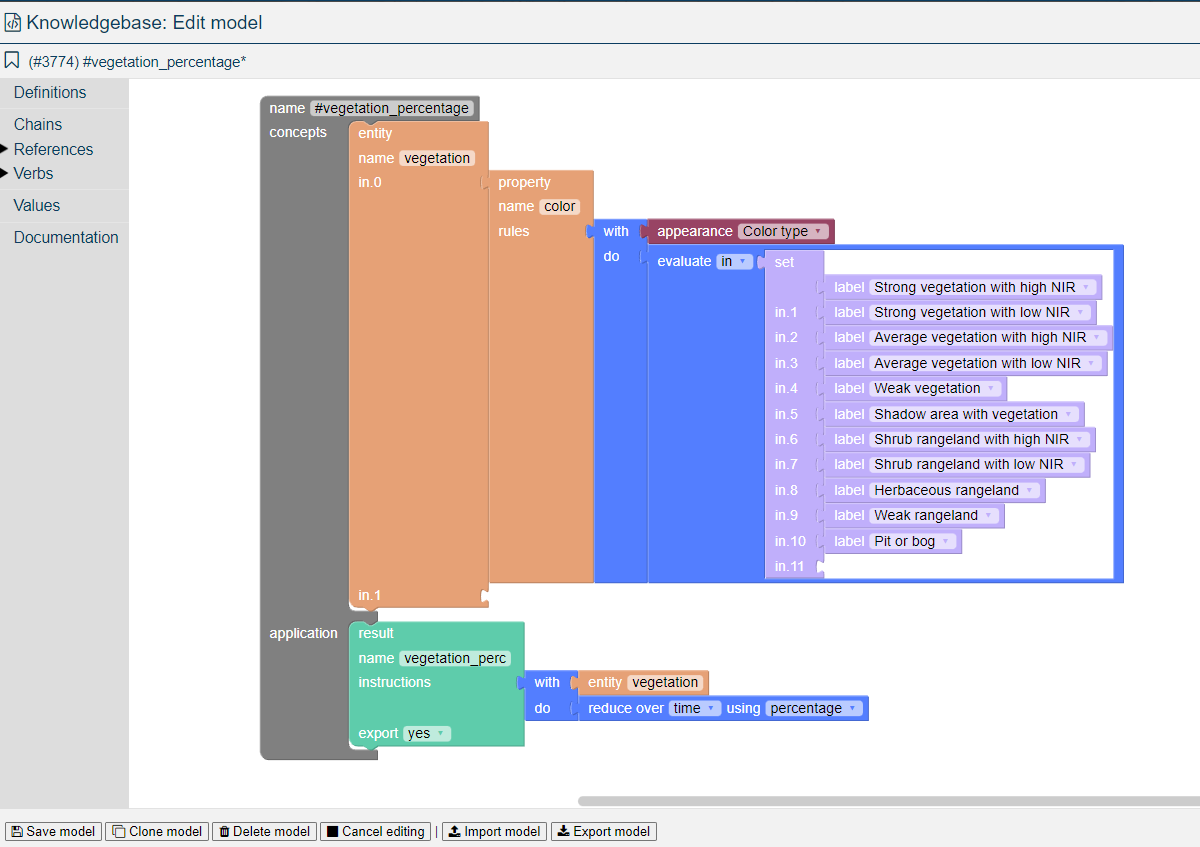Sen2Cube.at
Sentinel-2 Semantic Earth Observation Data and Information Cube for Austria (Sen2Cube.at) is the
world's first prototype of a semantic EO data cube covering all of Austria and includes all
available Sentinel-2 images since Sentinel-2A was launched in 2015.The semantic enrichment used in
Sen2Cube.at is a physical-model-based, spectral categorisation and additionally derived information
(Satellite Image Automatic Mapper – SIAM decision tree software).
The multi temporal information in this case is the percentage of vegetation observed per pixel in
Salzburg region of Austria. Around 2200 Sentinel-2 scenes were used to get the information from
Sen2cube.at using graphical model shown in the below image.
 Credit: Dirk Tiede
Credit: Dirk Tiede
The information, basically rasters, that we obtained from Sen2cube.at was then pre processed in
Python and PyQGIS, which is a python environment inside QGIS. The pre processing was done to get the
rasters ready for visualization. The pre processing steps involved binary thresholding of individual
rasters, adding the rasters to a single rasters, generating individual rasters based on unique
values, generating style files for individual rasters and finally generating a single style file for
all the rasters. To make the process reproducible and due to the large number of rasters involved,
the preprocessing step was dealt mostly with Python scripting.
After the rasters were ready for visualization, they were hosted on Geoserver, which is an open
source server based on Java to store, edit and share geospatial data. Again, considering the amount
of data, the entire process of uploading the rasters to Geoserver, uploading the style files and
then applying and publishing those styles to respective rasters were done with script.
Finally, the visualization platform was built using HTML, CSS and Javascript. Leaflet, a open source
mapping
JavaScript library for mapping was primarily used to display the geospatial content. Bootstrap,
another free and open source CSS framework was used to make the website responsive. In addition to
native features of Leaflet and JavaScript, some other plugins were also used to add additional
features.